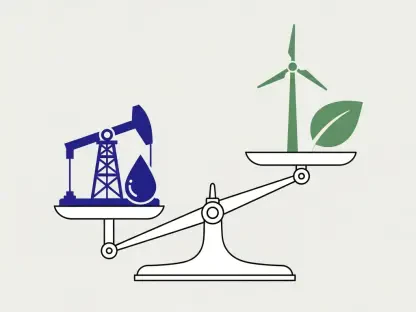In a surprising turn of events, the Canadian automotive landscape is witnessing a significant pivot as consumers increasingly favor hybrid vehicles over fully electric ones, challenging the nation’s push toward complete electrification. Recent data reveals a stark contrast in market dynamics, with hybrids capturing a larger share of new vehicle registrations while electric vehicle adoption faces unexpected hurdles. This shift raises critical questions about consumer preferences, infrastructure readiness, and the feasibility of ambitious federal targets for zero-emission vehicles. As economic pressures and practical considerations shape buying decisions, the rise of hybrids signals a complex transition in the journey toward sustainable transportation. This trend not only reflects the immediate priorities of Canadian drivers but also underscores broader tensions between market realities and policy goals, setting the stage for a deeper exploration of the factors at play.
Market Trends and Consumer Shifts
Hybrid Dominance in New Registrations
The momentum behind hybrid vehicles in Canada has reached unprecedented levels, with full hybrids commanding a 12.9% share of new light-vehicle registrations in the latest quarterly data. This figure surpasses the combined market share of battery electric vehicles (BEVs) and plug-in hybrids (PHEVs), which together account for just 9.2%. Mild hybrids have also gained traction, contributing an additional 4.2% to the hybrid category, bringing their total market presence to over 17%. This surge represents a clear departure from the electrification wave that peaked last year, driven by factors such as high interest rates and diminishing incentives for zero-emission vehicles. Consumers appear to be gravitating toward hybrids for their balance of fuel efficiency and lower upfront costs, especially in an economic climate that demands pragmatism over idealism. The data highlights a pivotal moment where practicality is reshaping the automotive sector in unexpected ways.
Beyond the raw numbers, the hybrid boom reflects a deeper shift in consumer mindset, as many Canadians prioritize vehicles that don’t require extensive charging infrastructure or long-term financial commitments. Unlike BEVs, which have seen only a modest volume increase of 13.3% while dropping to a 5.9% market share, full hybrids offer a familiar driving experience without the range anxiety that still plagues electric models. The appeal lies in their ability to serve as a bridge technology, providing environmental benefits without the steep learning curve or lifestyle adjustments associated with full electrification. This growing preference suggests that while environmental consciousness remains a factor, immediate economic and logistical concerns are taking precedence. As hybrids continue to outpace their electric counterparts, the implications for long-term sustainability goals become increasingly complex, prompting a reevaluation of how best to align consumer needs with broader objectives.
Regional Variations in Vehicle Adoption
Across Canada, the adoption of hybrids and electric vehicles paints a fragmented picture, with distinct regional preferences shaping the market. Quebec stands as an outlier, maintaining a strong commitment to zero-emission vehicles, where 17.3% of new registrations are ZEVs, led by BEVs at 11.8%. This contrasts sharply with other provinces, where hybrids have taken a firm lead. In British Columbia, once a frontrunner in electric vehicle uptake, full hybrids now account for 16.9% of the market compared to just 9.9% for BEVs. These disparities point to varying levels of infrastructure support and consumer readiness, with some areas better equipped to handle the demands of electrification than others. The regional divide underscores how localized factors, from policy incentives to charging availability, play a critical role in determining vehicle preferences.
Ontario emerges as the epicenter of the hybrid surge, boasting a 14.6% share for full hybrids and leading in mild hybrid adoption at 5.2%. Meanwhile, Alberta showcases an even more pronounced tilt, with full hybrids outselling BEVs by a ratio of nearly seven to one. Such stark differences highlight not only diverse economic conditions but also cultural attitudes toward technology adoption. In provinces with limited charging networks or harsher climates, the reliability and versatility of hybrids offer a compelling alternative to the uncertainties of electric vehicles. This regional mosaic suggests that a one-size-fits-all approach to electrification may be impractical, as consumer priorities and infrastructure realities vary widely. Understanding these nuances is essential for stakeholders aiming to navigate the evolving automotive landscape and address the unique challenges faced by each part of the country.
Industry Dynamics and Policy Challenges
Competitive Landscape Among Automakers
In the hybrid segment, Toyota continues to hold a commanding position with a 38.1% market share, driven by popular models that have become synonymous with reliability and efficiency. However, its dominance has slightly waned from previous highs, opening the door for competitors like Honda, whose share has soared to 25.8% thanks to strong demand for hybrid SUVs and sedans. Ford, once a close rival to Toyota, has seen its share decline to 11.8%, largely due to a focus on truck-heavy lineups that struggle to compete with more diverse car and SUV offerings. Meanwhile, Hyundai and Kia maintain steady or growing footholds in the hybrid space, reflecting a market that is becoming increasingly competitive. This shift in dynamics illustrates how automakers must adapt to changing consumer tastes while balancing innovation with accessibility.
On the zero-emission front, the competitive picture tells a different story, with Tesla experiencing a dramatic fall from grace, its market share plummeting to just 7.8% amid a significant volume drop. Ford has seized the lead in this segment with a 12.9% share, followed by other players like Chevrolet and Toyota, the latter showing strength across both hybrid and ZEV categories. This reshuffling highlights the volatility of the electric vehicle market, where brand loyalty and technological advancements are constantly tested. As automakers grapple with these shifts, the challenge lies in addressing affordability and infrastructure gaps that deter widespread adoption of fully electric models. The evolving competition underscores the need for strategic agility, as companies vie to capture the trust and interest of a discerning Canadian consumer base amid fluctuating market conditions.
Policy Implications and Future Outlook
The rising popularity of hybrids presents a formidable obstacle to federal mandates aimed at boosting zero-emission vehicle sales, as hybrids do not contribute to these specific targets. Affordability remains a significant barrier, compounded by reduced incentives and trade policies such as high tariffs on certain BEV imports. This disconnect between consumer behavior and government objectives creates a strategic dilemma for policymakers and automakers alike, who must reconcile practical market demands with long-term environmental goals. The current trajectory suggests that without adjustments to incentives or infrastructure investment, achieving ambitious electrification targets could become increasingly elusive. Bridging this gap requires a nuanced approach that acknowledges the role of hybrids as a transitional technology in the broader sustainability framework.
Looking ahead, several key developments warrant close attention, including whether emerging affordable BEV options from major brands can reignite interest in electrification, particularly in pivotal regions like Ontario and British Columbia. Additionally, the sustained growth of competitors in the hybrid space could further reshape market dynamics, challenging established leaders. There is also the question of whether federal policies will adapt to slower-than-expected ZEV adoption by revising timelines or offering new support mechanisms. These factors collectively point to a maturing market where mainstream consumer priorities are driving change. Reflecting on the path taken, the shift toward hybrids in Canada reveals a critical tension between immediate needs and future aspirations, urging stakeholders to consider flexible strategies that can harmonize economic realities with the urgent push for sustainable transportation solutions.









